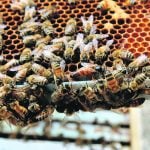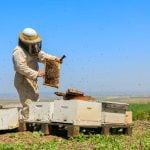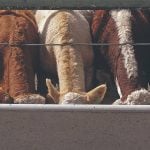
Tag Archives Bees

Tougher antibiotic rules linked to bee death rise
Canada tightened farmer access to livestock antibiotics, honeybees included, in 2018; new research suggests that beekeepers may be losing more bees because of it

Deadline looming on expanded winter bee loss insurance
Manitoba is giving beekeepers a more generous winter loss insurance package this year following a string of poor bee survival years

Manitoba updates bee mortality insurance for 2025
2025 will be the first year a beekeeper’s winter bee loss insurance will be based on all their overwintered hives, up from 90 per cent

Mapping tool to stop accidental spray damage now available across Prairies
Organic farmers and beekeepers hope FieldWatch can prevent costly spray drift accidents — but buy-in is still building

Wildfire smoke threatens to turn down honey tap for Manitoba beekeepers
Honeybees hunker down when there’s too much smoke in the air, slicing at a beekeeper’s honey flow —In Manitoba, there’s been a lot of wildfire smoke lately to contend with

A Canadian idea to save the bees
ApiSave could reduce bee death and act as a new pesticide against foulbrood and varroa mites, the company says, but it has to pass registration in Canada first.

B.C. company pitches bee health tool
ApiSave says product will boost bee immunity to overcome health challenges

COMMENT: How honeybees can help us monitor pollution across Canada

The wild side of pollination
More is better when it comes to bee diversity: researcher

Comment: Bee clustering knowledge based on faulty guidance
Honeybees cluster together when it’s cold but we’ve been completely wrong about why


